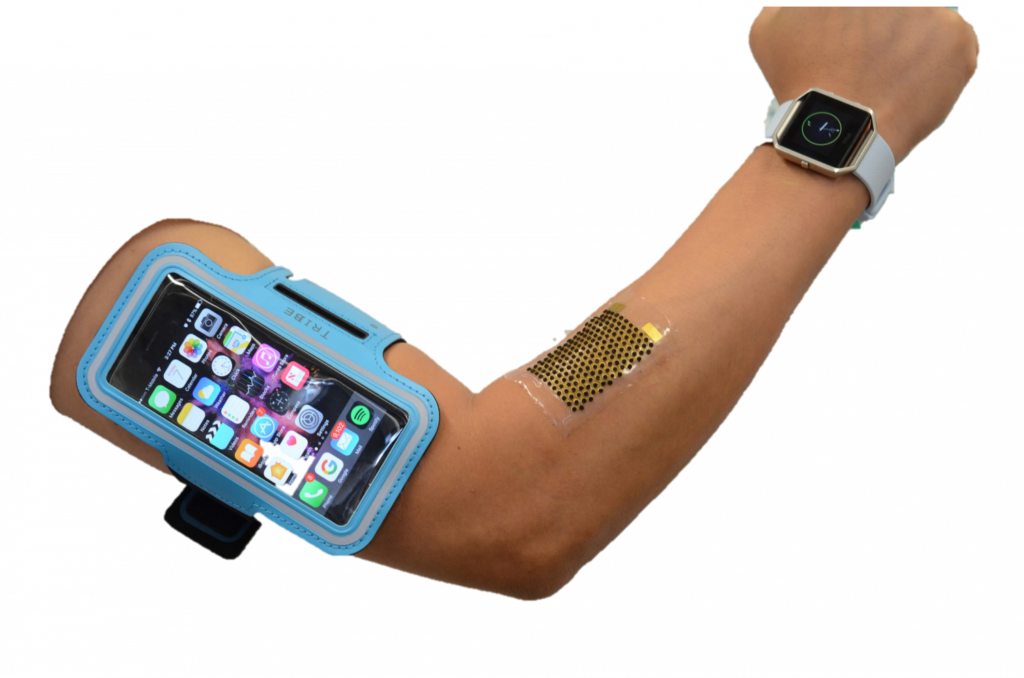Wearables is the new talk of the world. Commencing at smartwatches, smart contact lenses to Google’s smart-tattoos, they now grasp techies plunge of curiosities. Albeit so, one thing hindering the tiny-thing is charging. No matters with smartwatches, but what if any wearable medical biosensors run out of battery in the mid-day? And dispatching it often for charging adds it to the day’s heck that has to be remembered.
In that list of wearables, wearable biosensors revolutionize the health-care by providing doctors the patient’s data in real-time, having them in track with patient’s health conditions & notifies, if it deteriorates. These tiny wearables couldn’t take up button batteries that powers wrist-watches, as they are too thick for them. This intrudes the scientists to go for an innovative method to charge up these biosensors all time.
And this is what pushed a research team from Tokyo University of Science (TUS) to idealize ‘What if human-sweat could be the sole source of power to charge these biosensors?’ and the result becomes the topic!

Wearable Bio-fuel cell making electricity from Human Sweat
Led by Associate professor Isao Shitanda from Tokyo University of Science, Japan, the team proposed a biofuel-cell array design that uses lactate, a chemical present in human sweat, to generate electricity to power biosensors as well as wireless communication devices for a short span of time.
The bio-fuel cell is designed to likely be a bandage that wraps around your arm / skin. Present in the bandage, is an array of bio-fuel cells arranged on a water-repellant paper substrate and the count of arrays affixed on it, depends on the amount of power required. Paper layers are used to collect the wearer’s sweat and transport it to the cells via the capillary effect — the same effect that sees water travel quickly through the paper when it comes in contact with a wet surface.
Read this: MIT Scientists develop a Wearable device that could hack your dreams!
What happens is that upon sweating, the lactate in it reacts with the enzyme present in cell’s electrodes and produces electricity, as a result. This electricity flows through a current collector made from conductive carbon paste, thus charging up the device.
“In our experiments, our paper-based biofuel cells could generate a voltage of 3.66 V and an output power of 4.3 mW. To the best of our knowledge, this power is significantly higher than that of previously reported lactate biofuel cells,” Dr. Shitanda explained.

This isn’t first
This electricity-from-sweat thing is not the first here, as researchers from Electrical and Computer Engineering in Binghamton University proposed the same in 2017.
However, the researchers say their new model stands out compared to previous lactate-based biofuel cells as their porous carbon ink design can be fabricated via screen printing, meaning it may well be viable for mass production.
And this could be a revolutionary thing for wearables, says experts.
“We managed to drive a commercially available activity meter for 1.5 hours using one drop of artificial sweat and our biofuel cells,” explains Dr. Shitanda, “and we expect they should be capable of powering all sorts of devices, such as smart watches and other commonplace portable gadgets.”
References:https://www.tus.ac.jp/en/mediarelations/archive/20210413_0102.htmlhttps://interestingengineering.com/wearable-biofuel-cells-produce-electricity-from-human-sweathttps://www.sciencedirect.com/science/article/abs/pii/S0378775321000811






